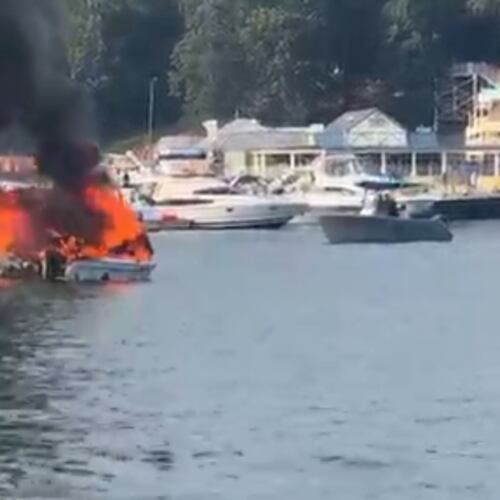Staying holed up inside since mid-March for the COVID-19 outbreak has been the modus operandi for many Atlanta commuters. The rides to and from work and school are often where many log the most miles, and those trips have almost completely disappeared.
Those working from home or who are unemployed are mainly taking trips in a smaller radius to run errands or to a local park — not on a six-hour drive to Florida. The nearly apocalyptic disappearance of bodies from the road system has lightened the traffic load nationwide in a way never seen since the advent of the automobile.
But with all that said, there still are many people driving to jobs in all sorts of industries that never closed during “The Great American Shutdown.” Those sheltering from the pandemic have decreased the volume on the streets enough to eliminate predictive rush-hour delays, but there still are a steady number of vehicles on the road. But as this shutdown wears on into May and some restrictions loosen, more people are taking to the roads.
I’ve been on vacation from the WSB Skycopter this past week. My wife, Momo, and I got married on April 25, with about 200 of our friends and family tuning in on a huge Zoom meeting. Welcome to 2020.
We've been traveling around the state to do some different hikes in lieu of an out-of-town honeymoon and definitely noticed constant traffic in many areas. But there were very few delays. And since I haven't been paying close attention to Atlanta traffic this past week, I reached out to my coworkers on-duty on the WSB Traffic Team.
When Gov. Brian Kemp’s first allowance of the opening of bowling alleys, hair places, and nail salons began Friday, April 24, traffic did seem to pick up. I drove from Chamblee to Buford that day to pick up our small wedding cake and remember thinking on I-85/northbound at Jimmy Carter in Norcross, “This looks almost like normal, midday Atlanta traffic.”
Around that same time, about 1 p.m., there were several prolific crashes scattered around town. Alex Williams was on duty in the WSB 24-Hour Traffic Center at that time.
“Since last Friday I have definitely noticed an increase in volume on the roads during the midday as well as PM drive,” Williams said. “It’s still not back to normal, but definitely more people are out and about. With more people out and speeds still above normal, there have been more crashes and delays stacking up much faster behind them.”
Crashes create crashes, and some of the wrecks we have seen these days have been wicked. There are fewer wrecks these days, but far more seem to involve flipped-over cars and heavy damage. And these usually are a result of a sudden change in conditions at high speeds.
Williams also noted that construction is staying out in lanes past the normal morning and afternoon cutoff times. Some of these work zones do cause delays, which can be a real hazard to people hauling around above the speed limit.
"My advice? Never let your guard down behind the wheel," Smilin' Mark McKay recommended. He had double duty in the WSB Skycopter this week, so he had a good read on the traffic patterns after some businesses opened. And then rain came in buckets last Wednesday afternoon.
“The relative lack of rain recently, along with increased traffic volume, means we’ve seen incidents on the rise,” McKay told me as those Hump Day showers began making hash of the PM drive time. “Many of the usual areas’ standing water on the interstates have yielded crashes.”
» COMPLETE COVERAGE: Coronavirus in Georgia
Tractor trailers went awry, as they often do, on I-75/southbound at the I-675 merge in Stockbridge. There were multiple wrecks on I-20/westbound at Candler Road in DeKalb, where water often pools up in the left lanes. And, McKay said, these kinds of wrecks can shake off that “lighter than normal” feel very quickly.
“When there’s an incident that knocks out multiple interstate lanes, sizable delays have returned, especially during the traditional morning and evening rush hours,” McKay explained. These are the times we really notice that traffic is on the rise, and quite a bit of it never left.
"We have been reminded that ATL Traffic is coming back," Mike Shields, who normally works PM drive each day, said. "With more people on the roads and rain falling, we are reminded how quickly Atlanta traffic can and does change."
Shields, McKay, and Williams had to amp up their coverage that rainy Wednesday on 95.5 WSB and on the Triple Team Traffic Alerts App. They had to issue multiple TRAVEL ADVISORIES, GRIDLOCK ALERTS, and RED ALERTS. These are the heightened denominations the WSB Traffic Team gives to traffic incidents that block multiple lanes, cause intense delays, and/or completely shut down roads. ‘Rona has not rid Atlanta of these.
“We have seen increased volume over the last couple weeks. But with overall lighter-than-usual traffic, we have seen people letting their guard down which has resulted in many intense crash scenes,” Shields said.
The takeaways here are simple. Atlanta traffic is steadily increasing, regardless of what businesses are open. But this volume isn’t great enough to cause anything to close to the average Atlanta rush hour before “Corona-geddon.” Nonetheless, drivers need to drive with heightened awareness and preparation, as conditions — both weather and traffic-wise — can change on a dime. And rain tarnishes commutes as badly as it always has.
Doug Turnbull, the PM drive Skycopter anchor for Triple Team Traffic on 95.5 WSB, is the Gridlock Guy. He also writes a traffic blog and hosts a podcast with Smilin' Mark McKay on wsbradio.com. Contact him at Doug.Turnbull@cmg.com.
About the Author
The Latest
Featured

